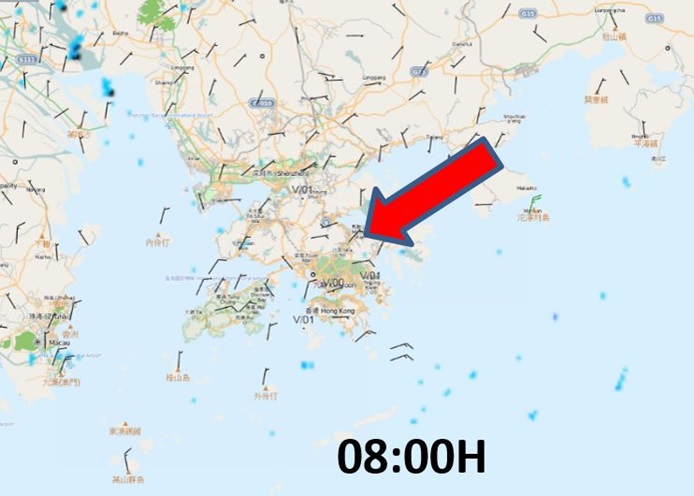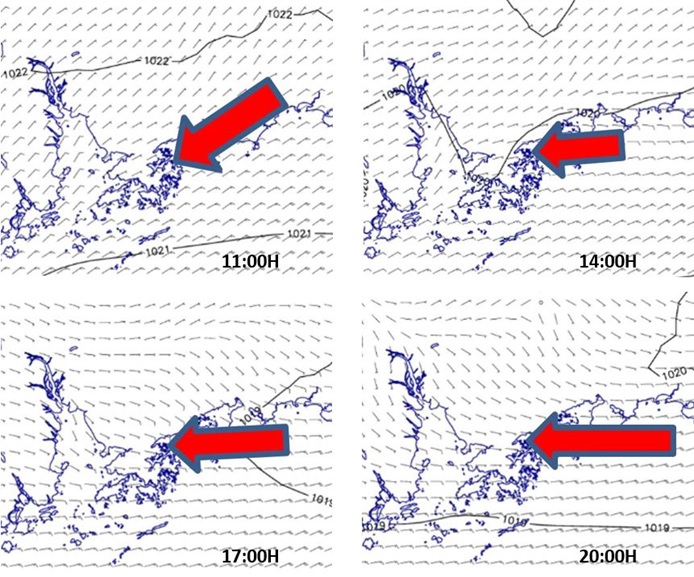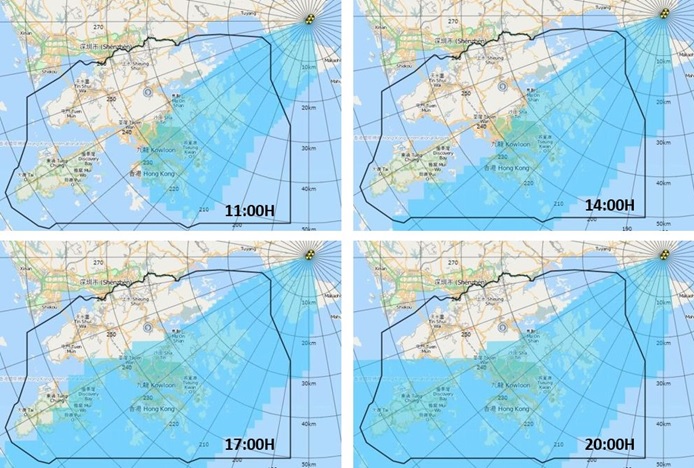Nuclear Accident Consequence Assessment
Nuclear Accident Consequence Assessment
HUNG Fan-yiu
August 2018
One of the major missions of the Observatory is to carry out nuclear accident consequence assessment. Have you ever wondered why this important work falls under the responsibility of the Observatory?
Before answering this question, let us think what factors will affect the assessment of environmental radiation dose in the unlikely event of a nuclear accident. First of all, information on the leakage of radioactive materials, such as the release location and height, type of radioactive materials, amount and duration of the release, etc. are obviously very important factors. Apart from those, we also need weather information such as wind direction and speed, atmospheric stability and precipitation, etc. to assess the dispersion of radioactive materials.
If only a trace amount of radioactive materials is temporarily released, a quick radiological consequence assessment can generally be made based on the weather conditions at the time of the incident. However, if there is a continuous release of radioactive materials, an accurate weather forecast will be in need to effectively assess the extent and severity of the impact of radioactive materials. Take a hypothetical example, Figure 1 shows the wind direction and speed at 8 a.m. on a certain day. At that time, winds over Hong Kong and its vicinity are mainly light to moderate northeasterlies. The numerical weather model predicts that the wind direction will gradually turn to the east and wind strength will also pick up slightly during the day (Figure 2). Assuming that at 8 a.m., the Daya Bay Nuclear Power Plant starts releasing radioactive materials for several hours, the atmospheric dispersion model shows that radioactive materials will spread to the southwest in the first few hours and affect the eastern and southern parts of Hong Kong. As the winds turn to coming from the east, the radioactive materials will start spreading westward later in the afternoon, and the affected area will extend to the southwestern part of Hong Kong (Figure 3).
From this, we can see that professional meteorological knowledge is one of the keys to radiological consequence assessment. We will continue to introduce the impact of wind direction and speed, atmospheric stability and precipitation on nuclear accident consequence assessment in the future. Please stay tuned.

Figure 1: Wind direction and speed at 8 a.m. in the hypothetical example

Figure 2: Wind direction and speed predicted by numerical weather model in the hypothetical example

Figure 3: The dispersion of radioactive materials predicted by atmospheric dispersion model in the hypothetical example